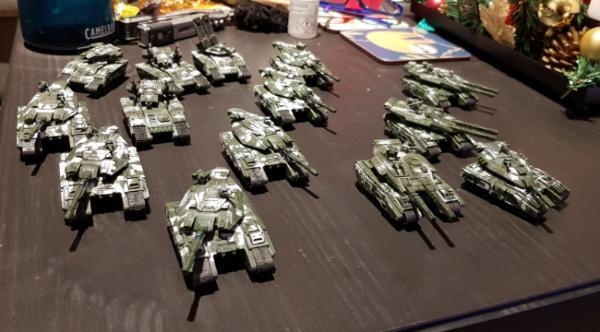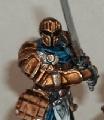| Author |
Message |
 |
|
|
 |
|
Advert
|
Forum adverts like this one are shown to any user who is not logged in. Join us by filling out a tiny 3 field form and you will get your own, free, dakka user account which gives a good range of benefits to you:
- No adverts like this in the forums anymore.
- Times and dates in your local timezone.
- Full tracking of what you have read so you can skip to your first unread post, easily see what has changed since you last logged in, and easily see what is new at a glance.
- Email notifications for threads you want to watch closely.
- Being a part of the oldest wargaming community on the net.
If you are already a member then feel free to login now. |
|
 |
![[Post New]](/s/i/i.gif) 2021/01/03 16:59:53
Subject: Cured Resin Physical Properties?
|
 |

Yu Jing Martial Arts Ninja
North Wales
|
Disclaimer:
Current Status: Want to start down the rabbit hole, don't own printer yet, have started hording STLs, haven't so much as sniffed resin.
I've been trying to read up on resins and get some idea about the physical properties of the stuff. Does it end up like Finecast? Mantic resin? HIPS? PVC, or is it a completely different kind of animal?
My initial goal is to print some Star Trek ships at 1/7000 so they're going to be 40 - 60 mm. long. Am I dreaming, trying to do them that small and actually being able to game with them, or would it be a "look - don't touch" thing?
I've seen references to ABS like resins, other ones with increased flexibility and obviously some people say they're great, others say that they're rubbish. People end up doing mixes of different resins and try different layer curing times and post processing curing times...
Basically, am I going to have to dust off my pointy hat, witches' cloak and broomstick and be prepared to dabble in some experimental black magic to get the results that I'm after? I'm definitely not averse to that level of thinking, just like to know what I might be letting myself in for!
|
|
This message was edited 1 time. Last update was at 2021/01/03 17:01:14
|
|
|
 |
 |
![[Post New]](/s/i/i.gif) 2021/01/03 18:35:17
Subject: Cured Resin Physical Properties?
|
 |

Leader of the Sept
|
I am no expert and I have used a grand total of 2.types of resin, but my experience is that the fully cured resin is hard and brittle. However it's also pretty tough.
I have been using it to print 10mm scale tanks that are about 40.to.60mm long and end up having pretty thin barrels and nothing has broken yet. I wouldn't deliberately bend them too far, but normal handling seems to be fine. Also all.the tanks below have been done using default exposure settings. The only problems I've really had are when I went to 0.01mm layers and kept the same exposure settings as 0.05mm... really had to.chip them off the print bed, but otherwise everything printed fine 

|
|
This message was edited 1 time. Last update was at 2021/01/03 18:39:31
Please excuse any spelling errors. I use a tablet frequently and software keyboards are a pain!
 Terranwing - w3;d1;l1 Terranwing - w3;d1;l1
 51st Dunedinw2;d0;l0 51st Dunedinw2;d0;l0
 Cadre Coronal Afterglow w1;d0;l0 Cadre Coronal Afterglow w1;d0;l0 |
|
|
 |
 |
![[Post New]](/s/i/i.gif) 2021/01/04 18:13:53
Subject: Cured Resin Physical Properties?
|
 |

Dakka Veteran
|
Resin is very variable. Depending on what resin you use in your printer.
Some are stronger some are more plastic (a physical property).
I recently printed a part with 2mm x 3mm thick segments that were curved. My wife stepped on it. It broke of course but it took the full weight of a human power walking to break it. Later I tried to snap it by hand and I could not.
Most folks "undercure" their resin on purpose because a full cure isn't needed and complete cure increases strength but also results in brittleness. In this case strength is hardness and plasticity is it's flexibility. A resin with a good surface cure and a moderate throughout cure will be both hard and yet have some plasticity. However it is not as strong/hard as full cure (often called overcured). But instead of deforming the full cured resin will crack or shatter. It may take more force to achieve that failure but the failure will be more total and instant. A bent piece may be heated and bent and then submerged into cold water to "fix" it.
A non-cut rate resin will be STRONG. VERY STRONG. If you are worried about drop shatter then you want a lower amount of curing as that will prevent the shattering but the model will bend more easily and will still eventually suffer a fracture and or clean fault break.
Curing amount is dictated by UV exposure and oxidation level of the resin. As the resin oxidizes it loses reactivity and will "cease to cure" (which is why resin containers, once opened will have a shelf life). No amount of UV will cure oxidized resin as it is no longer reactive.
But over time, months, years, your model will continue to react in some ways and thus become harder and more brittle as the years pass due to incidental UV even with an oxidized surface, the interior will continue to react slowly.
By the by, this is true of ALL RESINS. The cure curve starts out very fast and then goes to infinity. So over the years your Forge World models are STILL CURING and becoming more hard.. and more brittle.
Once I get some smaller figures printed that are "not" GW stand-ins with some nice breakable bits I will hammer them and show the results. Considering that each figure costs me less than 6 cents in resin I don't mind doing some destructive testing down the road.
|
Consummate 8th Edition Hater. |
|
|
 |
 |
![[Post New]](/s/i/i.gif) 2021/01/04 19:31:55
Subject: Re:Cured Resin Physical Properties?
|
 |

Yu Jing Martial Arts Ninja
North Wales
|
Aha!
Thank you, this was just the stuff that I wanted to know. Things look pretty hopeful, then; I had visions of warp nacelles falling off Star Trek ships if I stared at them too hard, then wondering if I'd have to learn how to use modelling tools to thicken up the struts.
I'm guessing that I should start off with some test pieces and test them to destruction before trying to paint anything.
Interestingly, a YouTube video suggestion for Siraya resin ideas popped up for me. Dammit, Google! I know that you're spying on me, but do you have to be so blatant about it?!
|
|
|
 |
 |
![[Post New]](/s/i/i.gif) 2021/01/04 19:58:40
Subject: Cured Resin Physical Properties?
|
 |

Leader of the Sept
|
As a newbie to resin printing, I can recommend starting with water washable stuff. I got all the kit together for normal resin printing and went through one bottle, but using IPA makes the cleaning process super stinky and really needs respirator protection.
|
Please excuse any spelling errors. I use a tablet frequently and software keyboards are a pain!
 Terranwing - w3;d1;l1 Terranwing - w3;d1;l1
 51st Dunedinw2;d0;l0 51st Dunedinw2;d0;l0
 Cadre Coronal Afterglow w1;d0;l0 Cadre Coronal Afterglow w1;d0;l0 |
|
|
 |
 |
![[Post New]](/s/i/i.gif) 2021/01/04 20:34:51
Subject: Re:Cured Resin Physical Properties?
|
 |

Deathwing Terminator with Assault Cannon
|
Most resins used for printing yields similar feel (in terms of weight and apparent hardness) of resin as ones used by forgeworld.
One notable difference, however, is that both finecast and forgeworld resins are relatively 'soft' - meaning they carve/drill with relative ease, compared to that of 3d printed resin. Most 3d printer resin cures pretty solid, and I've shattered a lot of pieces (or spent way too much time going at it carefully) during my first few weeks of photon while drilling out holes for magnets. I describe working with 3d printed resin as "trying to sculpt ice".
So my 2 cents is integrate all of the post-cured processing you're planning to do directly into the stl itself. Don't count on being able to drill and carve into the resin - most you can do is sand it, and that alone is a lot of work.
|
|
This message was edited 1 time. Last update was at 2021/01/04 20:35:37
|
|
|
 |
 |
![[Post New]](/s/i/i.gif) 2021/01/04 21:24:06
Subject: Re:Cured Resin Physical Properties?
|
 |

Dakka Veteran
|
 skchsan wrote: skchsan wrote:Most resins used for printing yields similar feel (in terms of weight and apparent hardness) of resin as ones used by forgeworld.
One notable difference, however, is that both finecast and forgeworld resins are relatively 'soft' - meaning they carve/drill with relative ease, compared to that of 3d printed resin. Most 3d printer resin cures pretty solid, and I've shattered a lot of pieces (or spent way too much time going at it carefully) during my first few weeks of photon while drilling out holes for magnets. I describe working with 3d printed resin as "trying to sculpt ice".
So my 2 cents is integrate all of the post-cured processing you're planning to do directly into the stl itself. Don't count on being able to drill and carve into the resin - most you can do is sand it, and that alone is a lot of work.
I tend to do my drilling, alterations post print clean and pre-cure. But yeah most of us harden up these models pretty good and that makes it like cutting ice.. where it will chip and fracture rather than just drill. They sand just fine but beyond that it will chip out.
|
Consummate 8th Edition Hater. |
|
|
 |
 |
![[Post New]](/s/i/i.gif) 2021/01/05 23:03:22
Subject: Cured Resin Physical Properties?
|
 |

Courageous Questing Knight
|
I have used a number of resins and one of the better ones I recently discovered was the Siraya Tech Simple, which claims to only need 15% IPA so you can dilute and stretch your alcohol reserves - this resin gives great details and I can shorten the exposure time a bit to speed up printing. I do a shortened post-cure to keep it just slightly flexible and the minis seem perfect to me.
However, i have not had any success in 'heating & bending' any resin. i think this only works for minis done via an injection manufacturing with some level of a pvc sort of material - those minis can be dealt with easily.
I tried to melt a resin print (had a post I wanted to melt the end to keep in in the hole, but it would not melt in the traditional way - yeah, it burned, but did not melt.
|
|
|
|
 |
 |
![[Post New]](/s/i/i.gif) 2021/01/05 23:15:35
Subject: Cured Resin Physical Properties?
|
 |

Dakka Veteran
|
 MDSW wrote: MDSW wrote:I have used a number of resins and one of the better ones I recently discovered was the Siraya Tech Simple, which claims to only need 15% IPA so you can dilute and stretch your alcohol reserves - this resin gives great details and I can shorten the exposure time a bit to speed up printing. I do a shortened post-cure to keep it just slightly flexible and the minis seem perfect to me.
However, i have not had any success in 'heating & bending' any resin. i think this only works for minis done via an injection manufacturing with some level of a pvc sort of material - those minis can be dealt with easily.
I tried to melt a resin print (had a post I wanted to melt the end to keep in in the hole, but it would not melt in the traditional way - yeah, it burned, but did not melt.
Well heating in this case refers only to small/thin parts and submerged in boiling hot water.
It doesn't melt the resin at all. It has to do with resin properties across the board from photo-cure to reaction cure. The heat softens the resin allowing for repositioning, rapid cooling (ice bath) is required to "set" the new position. The other problem is you need to hold it in place, but the heating should relax the resin enough to remove stress (which may cause further warping depending on what is going on inside the lattice).
But "warm" won't be enough. A heat gun will burn it. You need to raise the temp to about the boiling of water without specific hot spots or open flame.
It is why, when I need to remove someone's crapped up Epoxy job on some part or another I cryo-treat it. Even JB weld and Lab-metal becomes glass brittle when exposed to a C02 Bath or colder and just one hit with a punch and it shatters.
Our photo-cure resins are epoxies and they are no different in behavior. Drop the temp with some dried ice and you can shatter our resins like glass. Heat it above boiling w/o open flame and it will become mushy.
|
|
This message was edited 1 time. Last update was at 2021/01/05 23:17:35
Consummate 8th Edition Hater. |
|
|
 |
 |
|
|